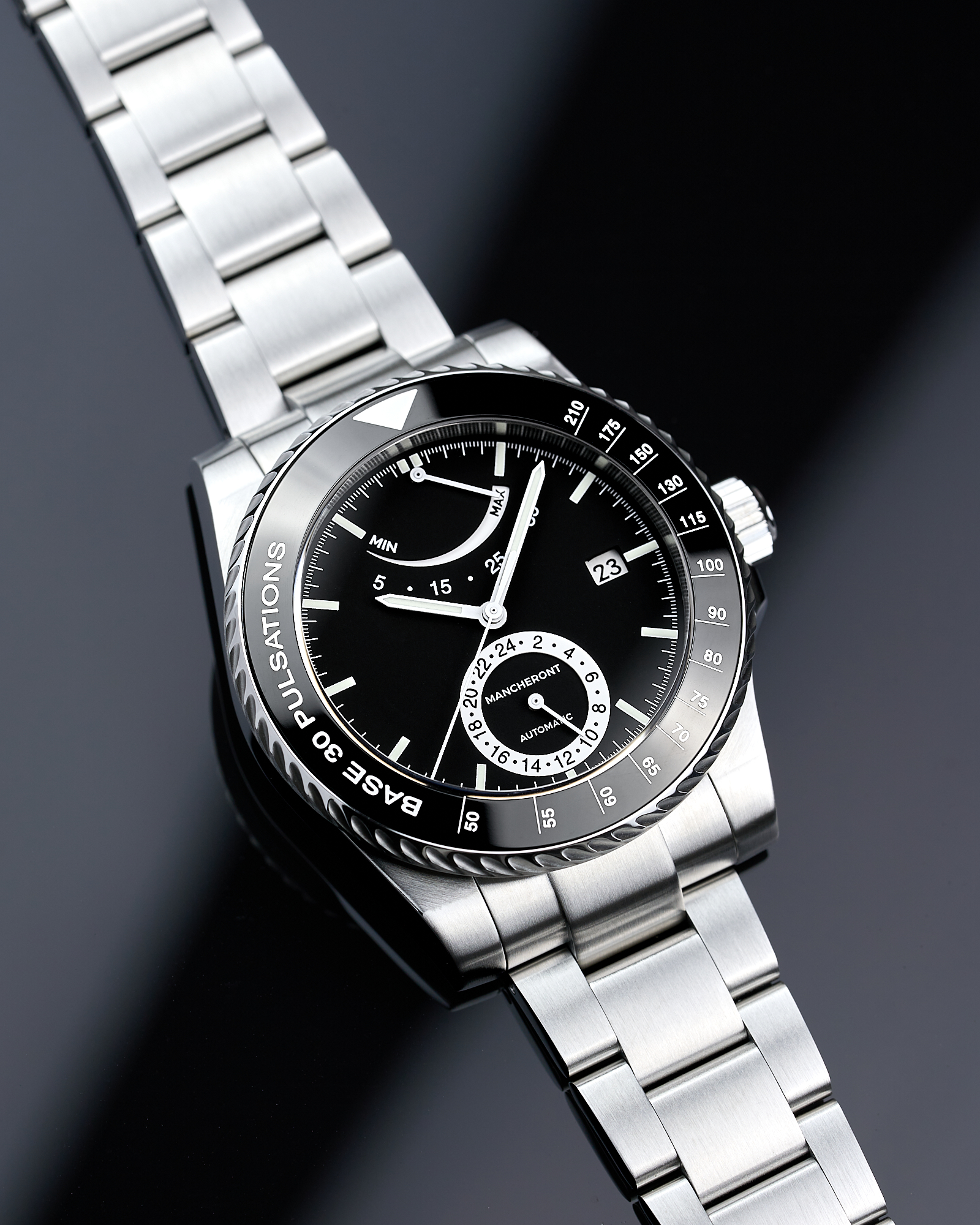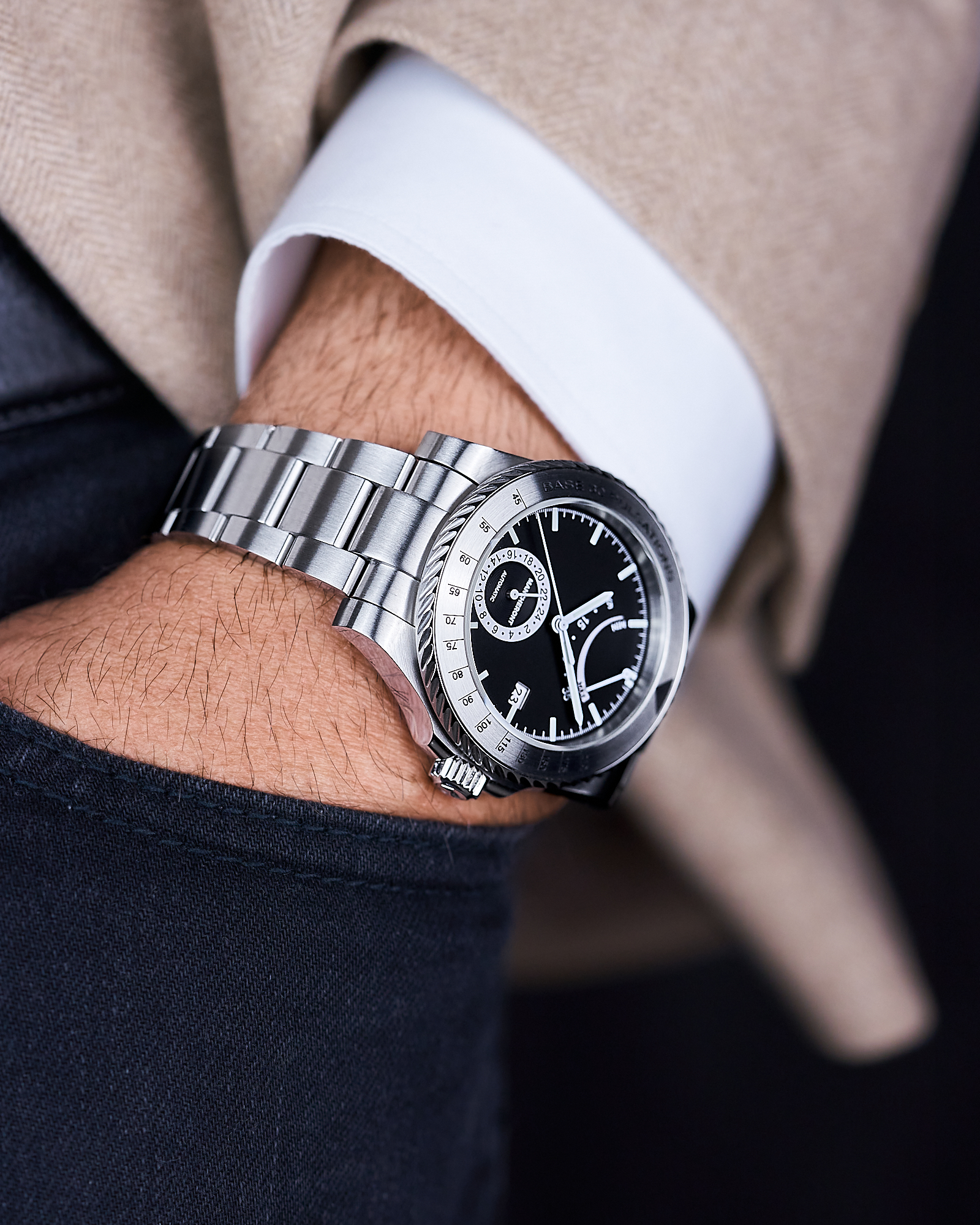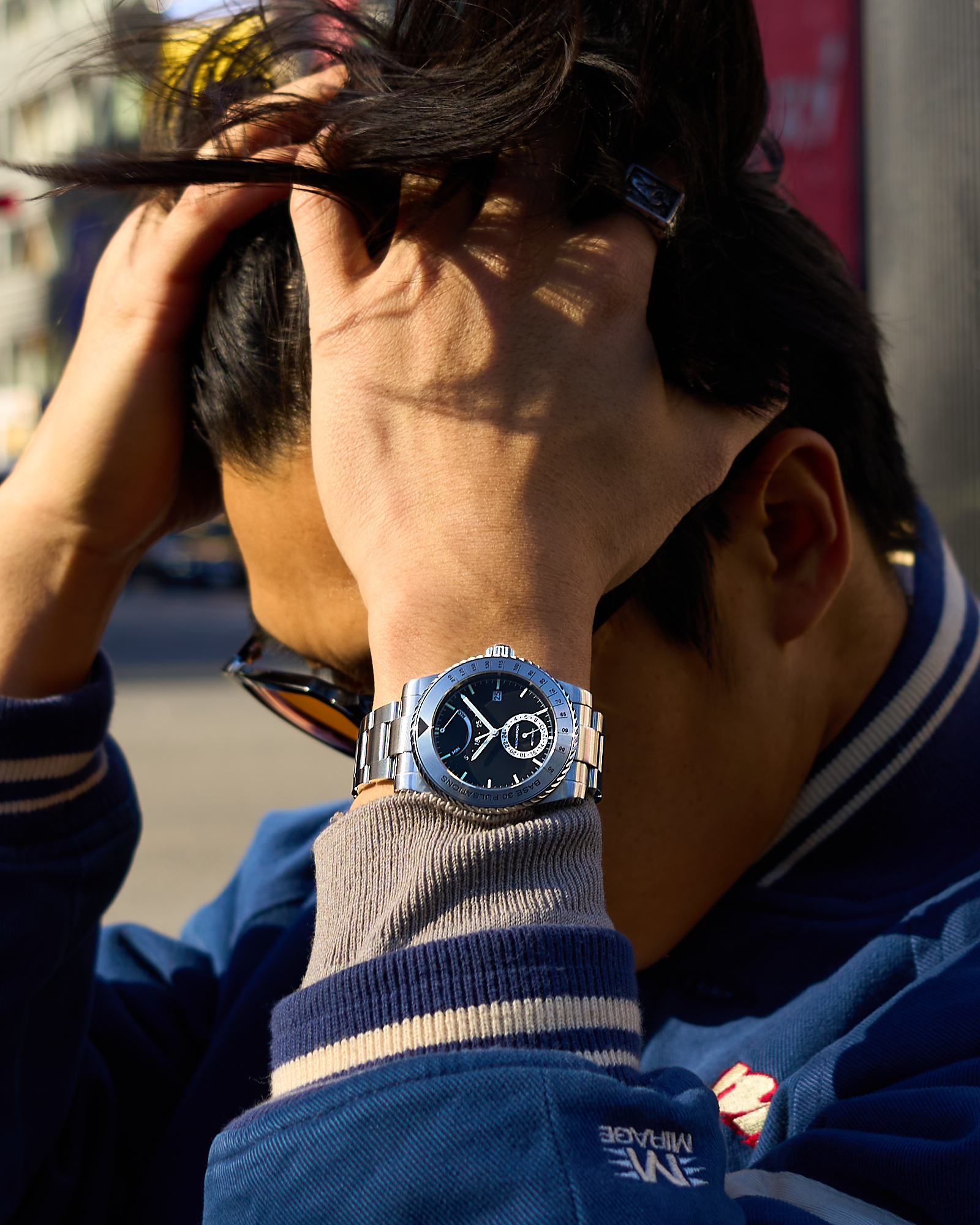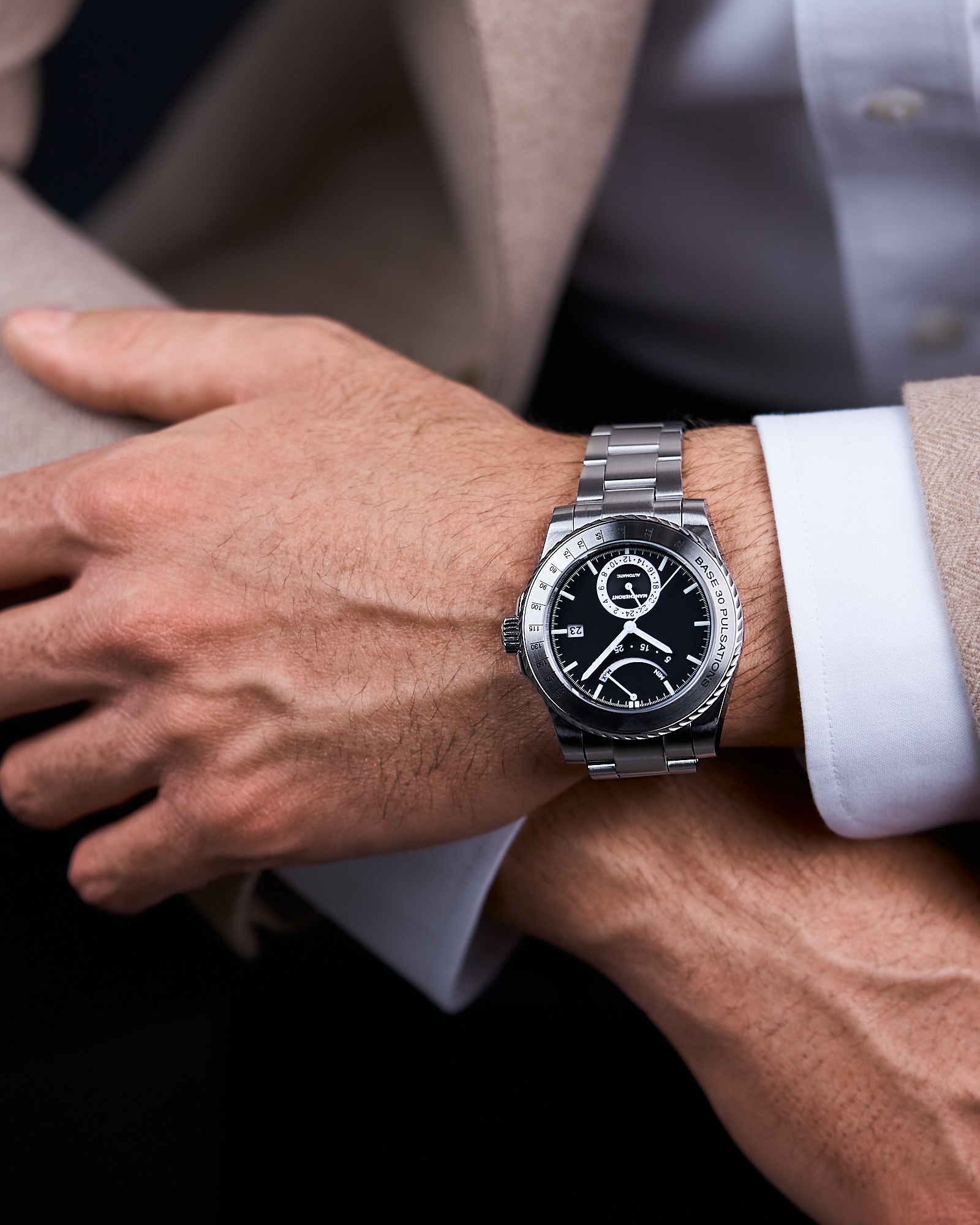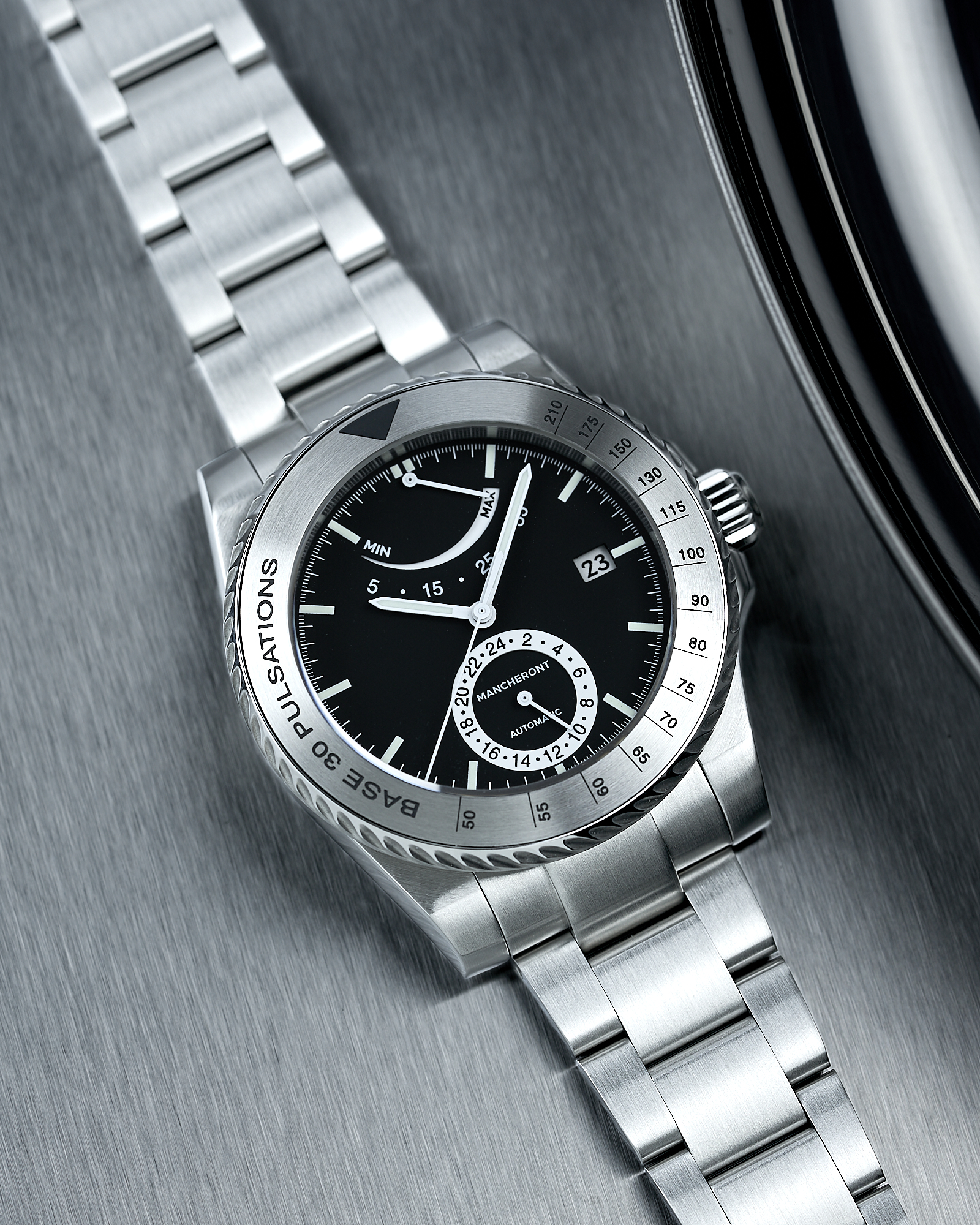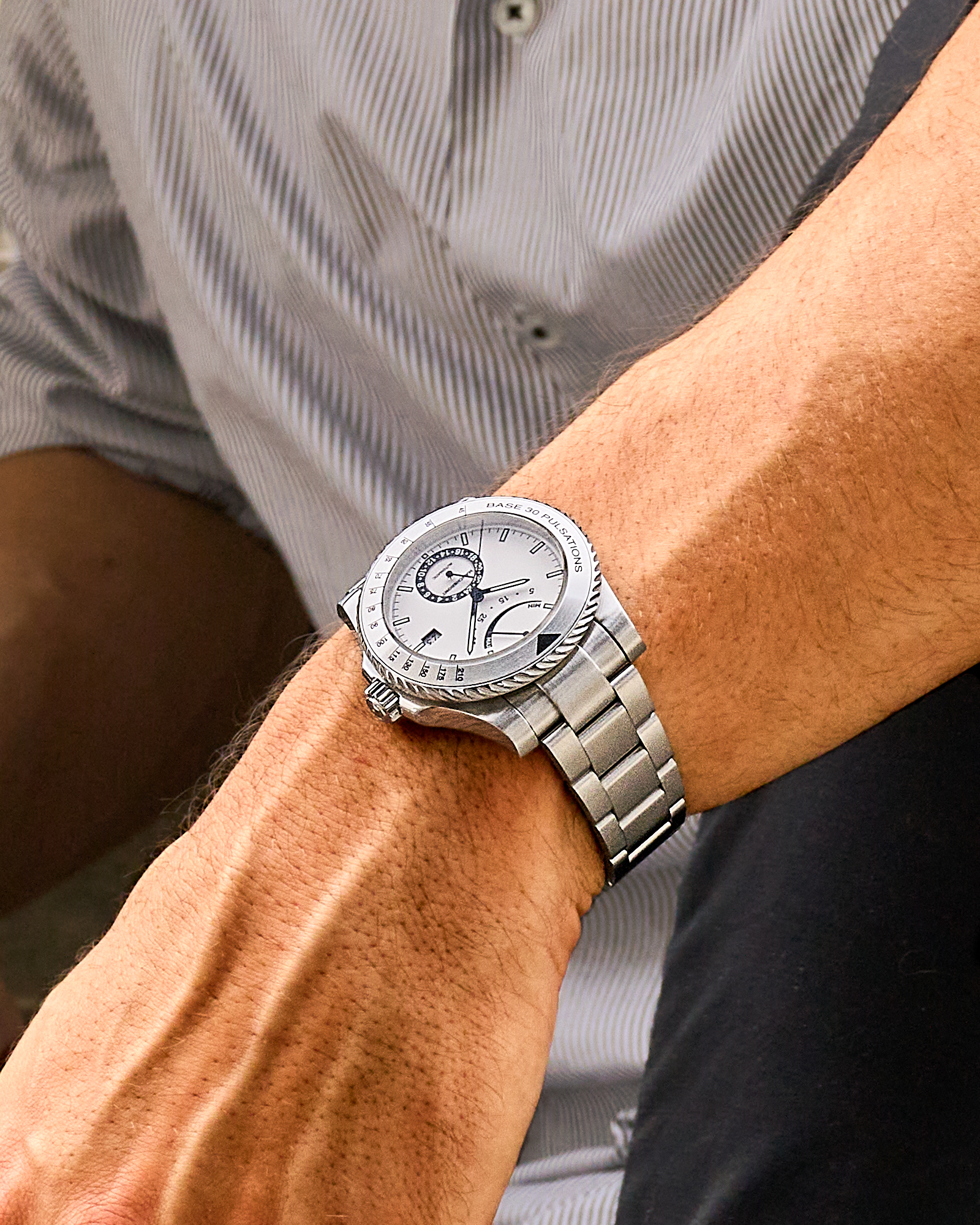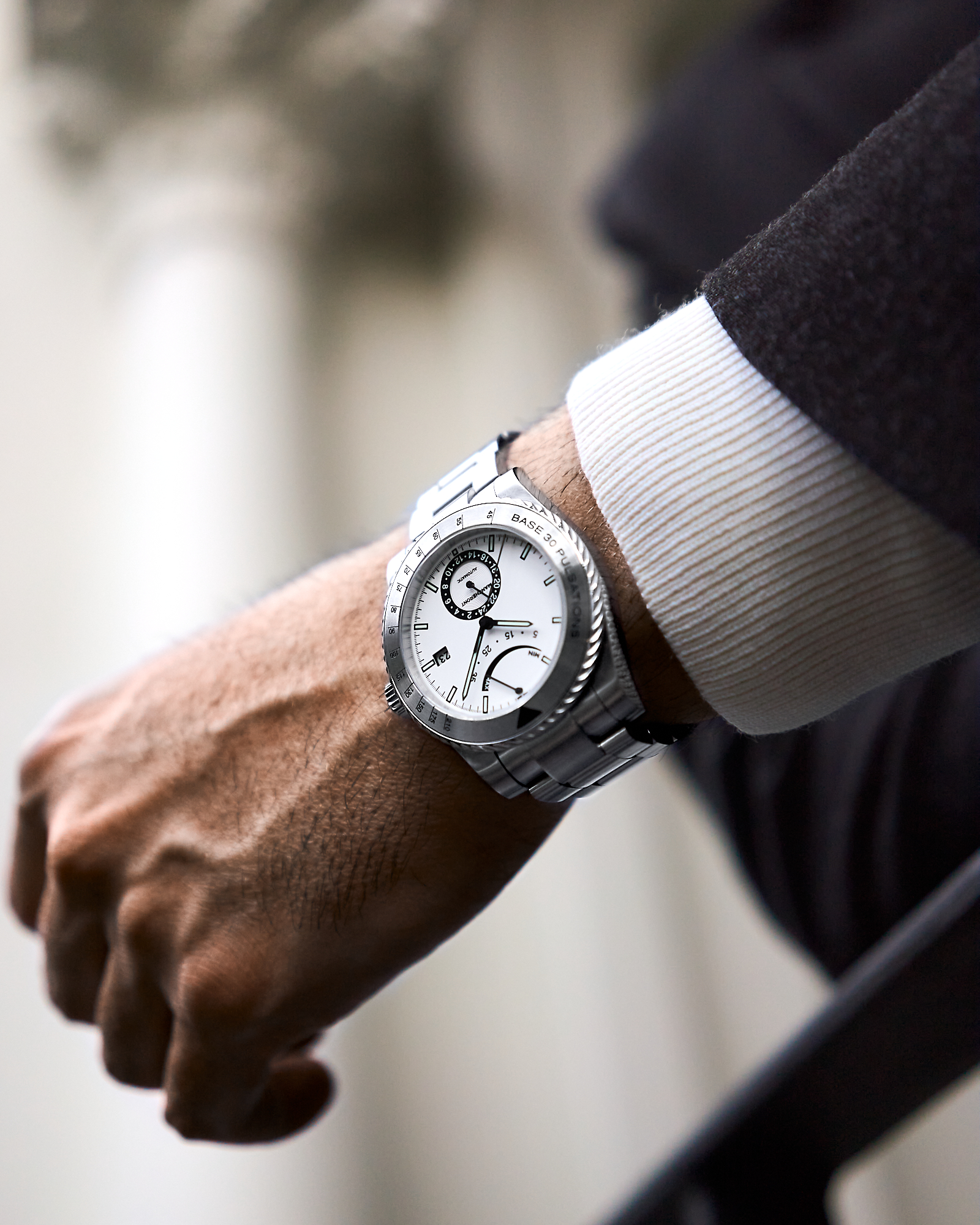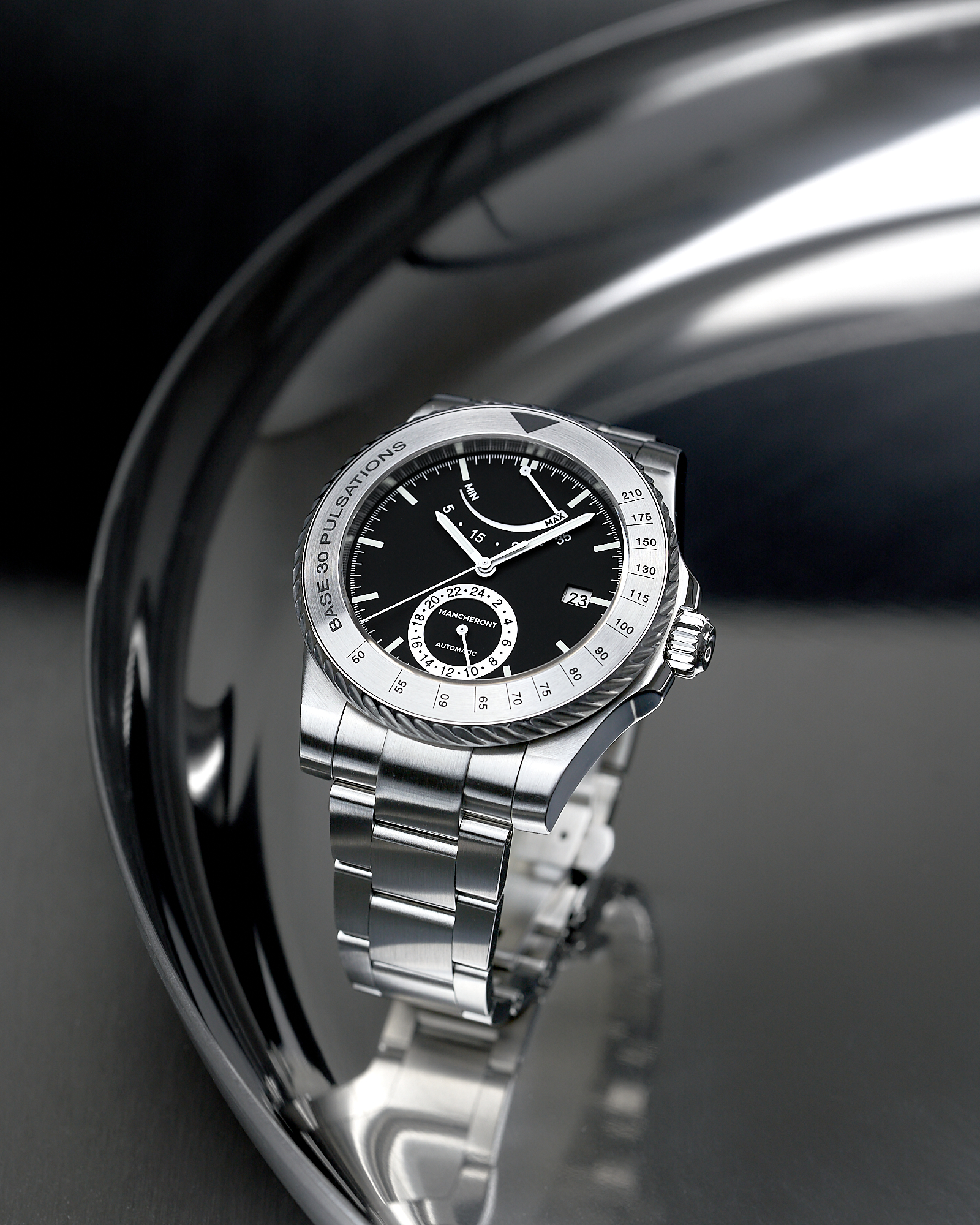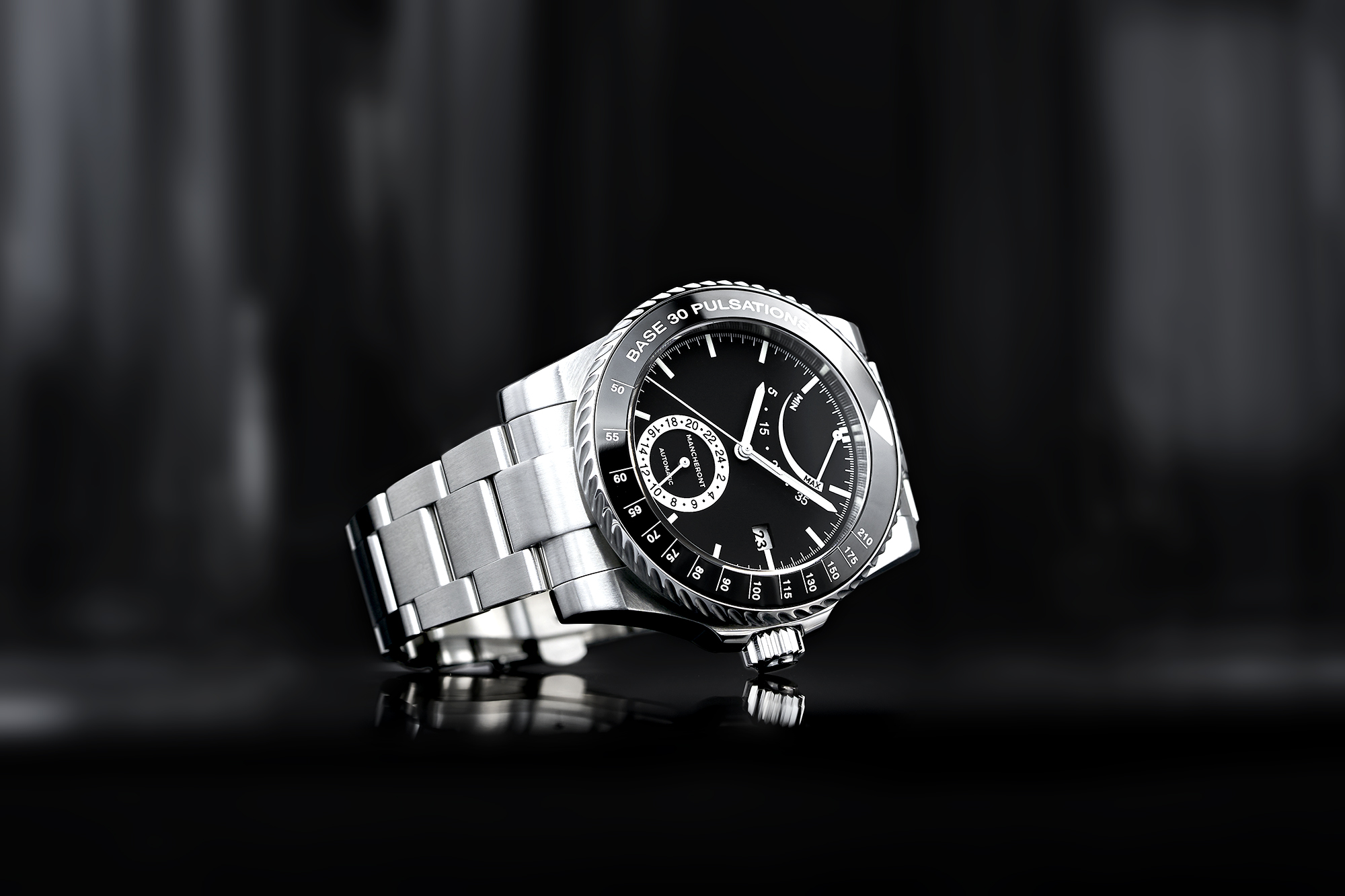 Sponsored post presented on aBlogtoWatch for advertiser
Sponsored post presented on aBlogtoWatch for advertiser
Information on health and wellbeing permeates our daily lives, with device upon device offering real-time information on everything from our VO2 max to our REM sleep cycles. This wealth of health tracking information is available at the push of a button. However, for many users, that abundance of data simply leads to information overload and those devices end up gathering dust in the back of the closet. This is especially true for watch enthusiasts who value the simplicity of an analog mechanical watch over the built-in obsolescence of a smartwatches. Yet, there is a simple way to measure vital health information, heart rate, with an analog watch — a practice that stretches back three centuries. Mancheront is offering its own unique and modern take on a pulsometer watch with the Pacer, an elegant and refined pulsometer watch that provides analog access to your heart rate via a quick turn of the bezel.
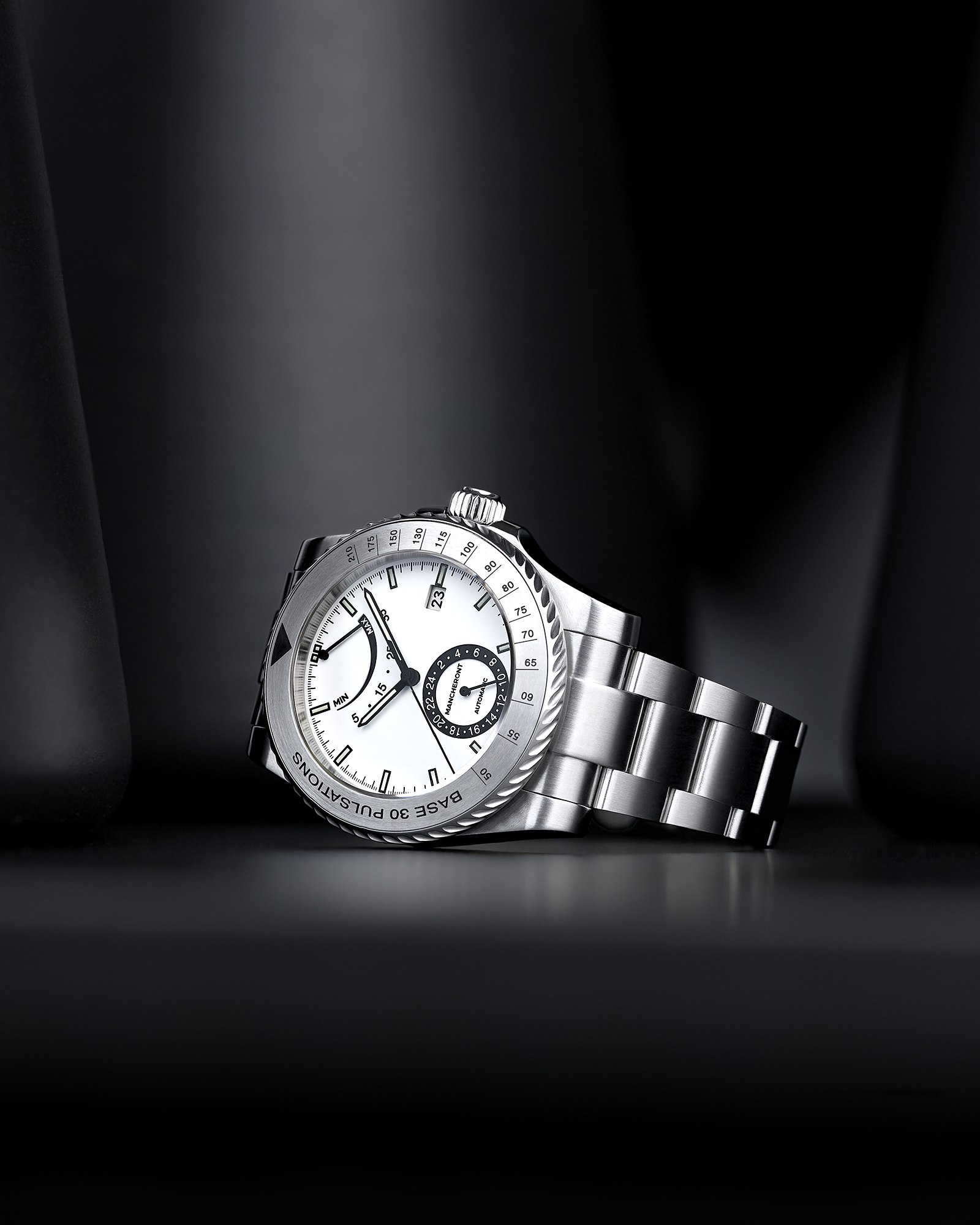 Pulsometer watches are often referred to as doctor’s watches (or physician’s watches) for good reason. In the early 1700s, English physician Sir John Floyer, an expert in asthma and emphysema (and advocate of the restorative properties of cold baths), needed a quick and easy method for measuring patients’ heart rates. To do so, he recruited London watchmaker Samuel Watson to build the first pulsometer. Though cumbersome by modern standards, the portable clock included a seconds hand with a lever that allowed him to start and stop the movement in order to track seconds. Though the clock wouldn’t win any horological awards, its utility was immediately apparent, as it allowed Floyer to quickly and easily track both the heart rate and respiration rate of his patients.
Pulsometer watches are often referred to as doctor’s watches (or physician’s watches) for good reason. In the early 1700s, English physician Sir John Floyer, an expert in asthma and emphysema (and advocate of the restorative properties of cold baths), needed a quick and easy method for measuring patients’ heart rates. To do so, he recruited London watchmaker Samuel Watson to build the first pulsometer. Though cumbersome by modern standards, the portable clock included a seconds hand with a lever that allowed him to start and stop the movement in order to track seconds. Though the clock wouldn’t win any horological awards, its utility was immediately apparent, as it allowed Floyer to quickly and easily track both the heart rate and respiration rate of his patients.
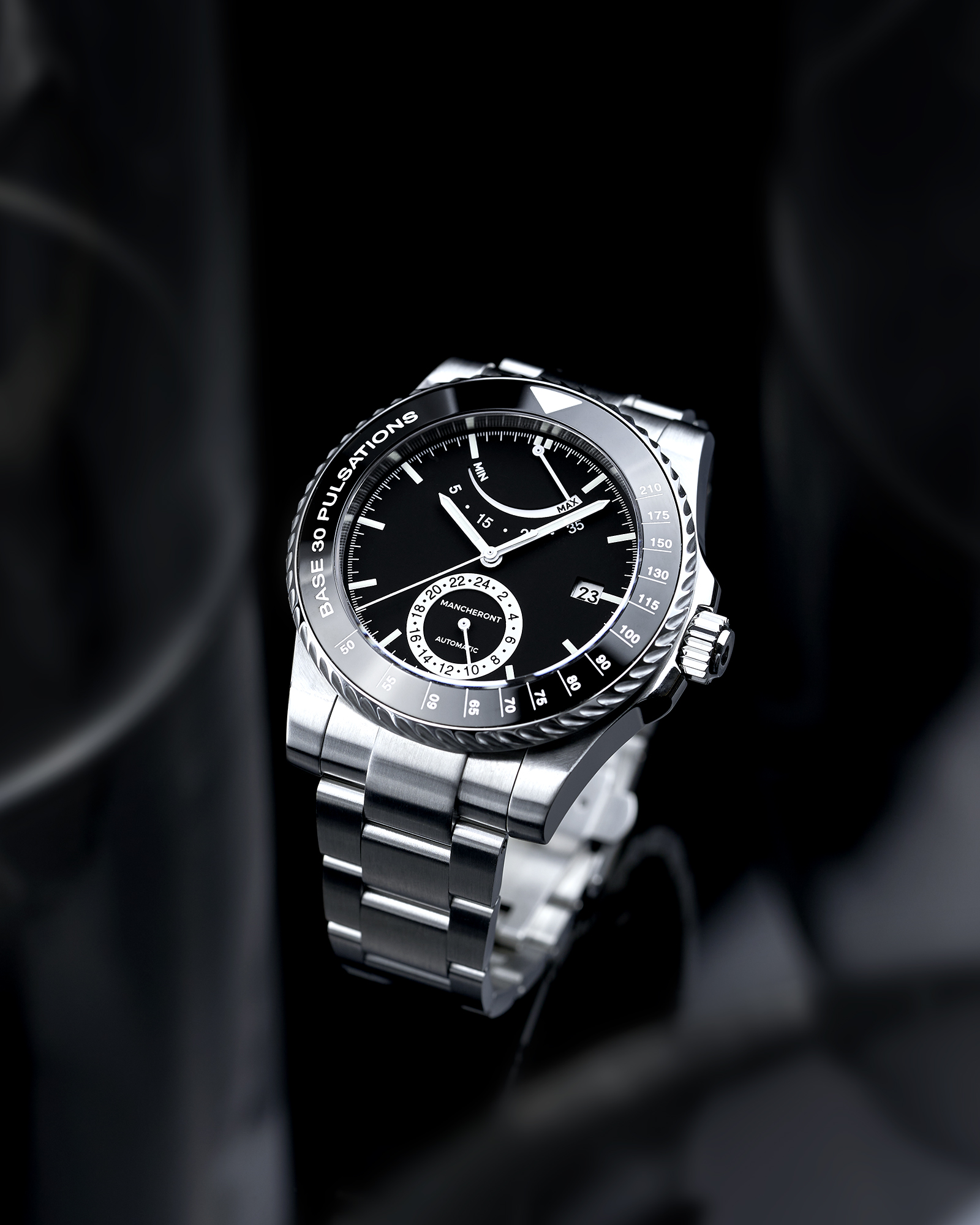 Though Floyer’s pulsometer revolutionized his own practice, it would take well over a century before pulsometer watches would see widespread practice in medicine. The idea behind a pulsometer is straightforward. Rather than count heartbeats for an entire minute to get the rate in beats per minute, a pulsometer scale is printed on the dial of the watch, calibrated to either 15 or 30 pulsations. In other words, at the start time, you begin counting up to 30 pulses. Once you hit that number, you look at the scale and it will provide you with the heart rate in beats per minute.
Though Floyer’s pulsometer revolutionized his own practice, it would take well over a century before pulsometer watches would see widespread practice in medicine. The idea behind a pulsometer is straightforward. Rather than count heartbeats for an entire minute to get the rate in beats per minute, a pulsometer scale is printed on the dial of the watch, calibrated to either 15 or 30 pulsations. In other words, at the start time, you begin counting up to 30 pulses. Once you hit that number, you look at the scale and it will provide you with the heart rate in beats per minute.
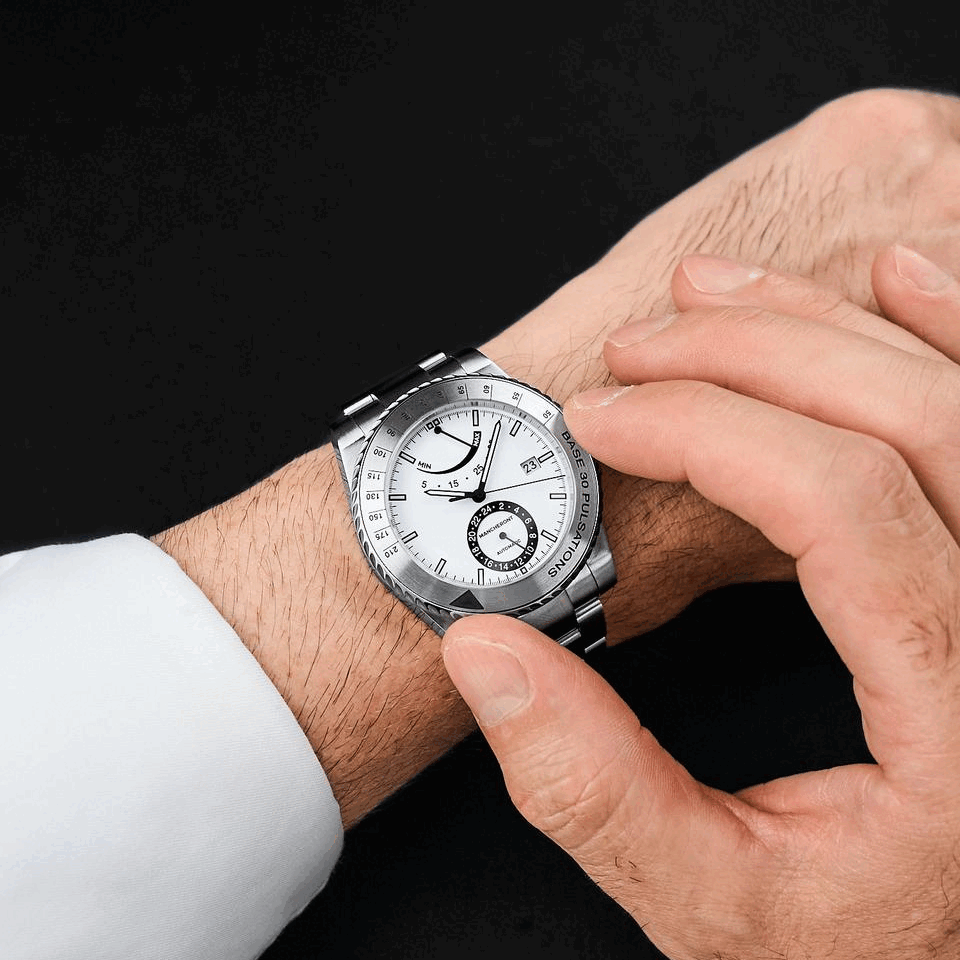 In early pulsometer watches, the wearer simply waited until the seconds hand passed 60, then began recording pulses to obtain the heart rate. The advent of the chronograph simplified the process for physicians, allowing them to begin timing on demand. Mancheront has gone back to basics with the Pacer, eschewing a chronograph function in favor of a rotating bezel with a pulsometer scale.
In early pulsometer watches, the wearer simply waited until the seconds hand passed 60, then began recording pulses to obtain the heart rate. The advent of the chronograph simplified the process for physicians, allowing them to begin timing on demand. Mancheront has gone back to basics with the Pacer, eschewing a chronograph function in favor of a rotating bezel with a pulsometer scale.
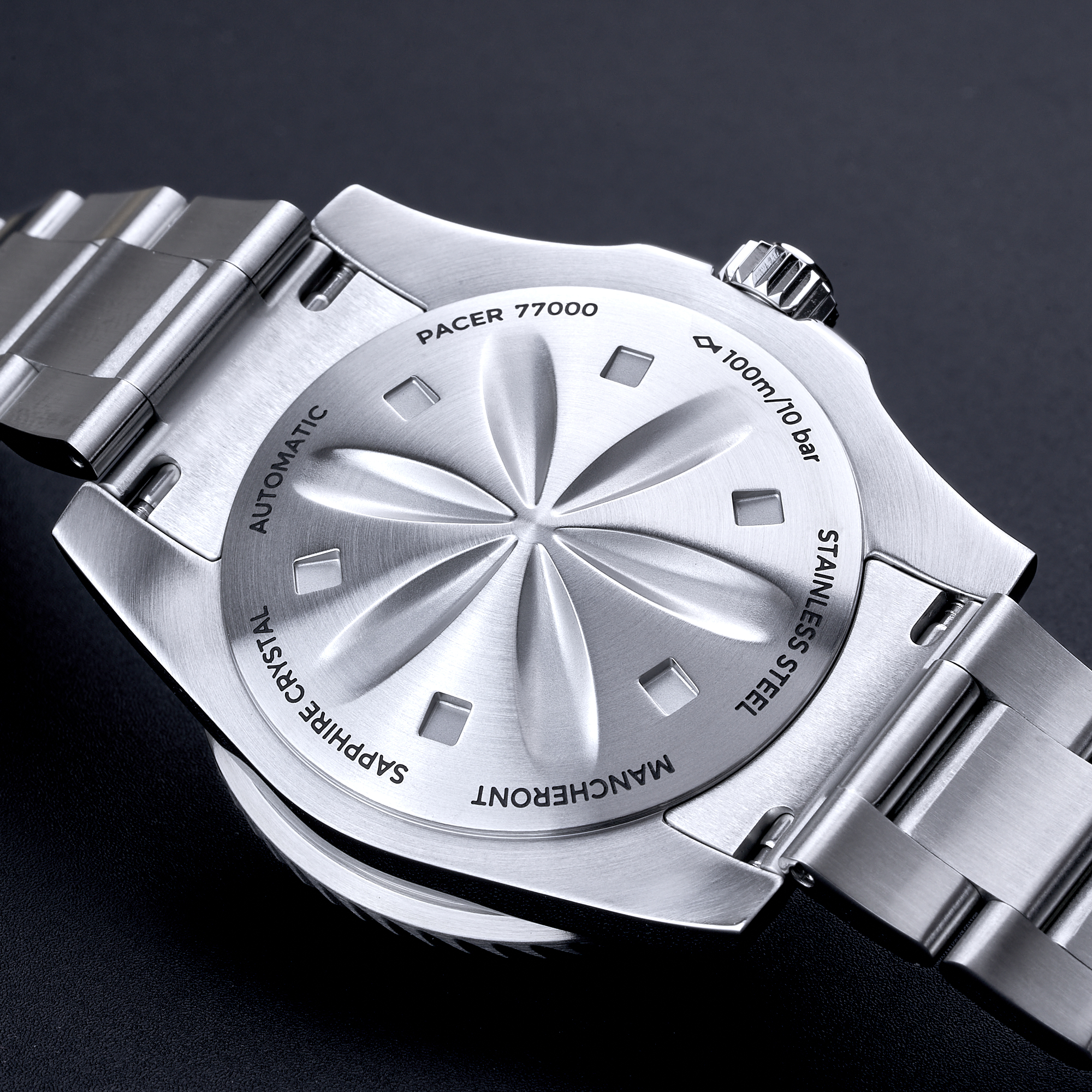 By utilizing a rotating bezel with a pulsometer scale, the Pacer was able to provide intuitive analog pulsometer readings, while avoiding the added cost, thickness, and complication of a chronograph function. Mancheront’s logic is that, for most users, the elapsed time markings on a typical divers bezel are superfluous and rarely used in modern daily living. By converting the timing bezel to a pulsometer scale, Mancehront was able to provide a more relatable and usable function to modern living through an analog fitness health tracker. Simply rotate the bezel to meet the running seconds hand, count 30 pulses, and read your heart rate. Some may question the necessity of a scale, suggesting that one can simply count their heartbeats for 10 seconds and multiply by 6 to obtain the beat per minute (bpm). However, the challenge arises: can you accurately count your heartbeats and seconds concurrently? Herein lies the value of the pulsometer scale as a reliable guide.
By utilizing a rotating bezel with a pulsometer scale, the Pacer was able to provide intuitive analog pulsometer readings, while avoiding the added cost, thickness, and complication of a chronograph function. Mancheront’s logic is that, for most users, the elapsed time markings on a typical divers bezel are superfluous and rarely used in modern daily living. By converting the timing bezel to a pulsometer scale, Mancehront was able to provide a more relatable and usable function to modern living through an analog fitness health tracker. Simply rotate the bezel to meet the running seconds hand, count 30 pulses, and read your heart rate. Some may question the necessity of a scale, suggesting that one can simply count their heartbeats for 10 seconds and multiply by 6 to obtain the beat per minute (bpm). However, the challenge arises: can you accurately count your heartbeats and seconds concurrently? Herein lies the value of the pulsometer scale as a reliable guide.
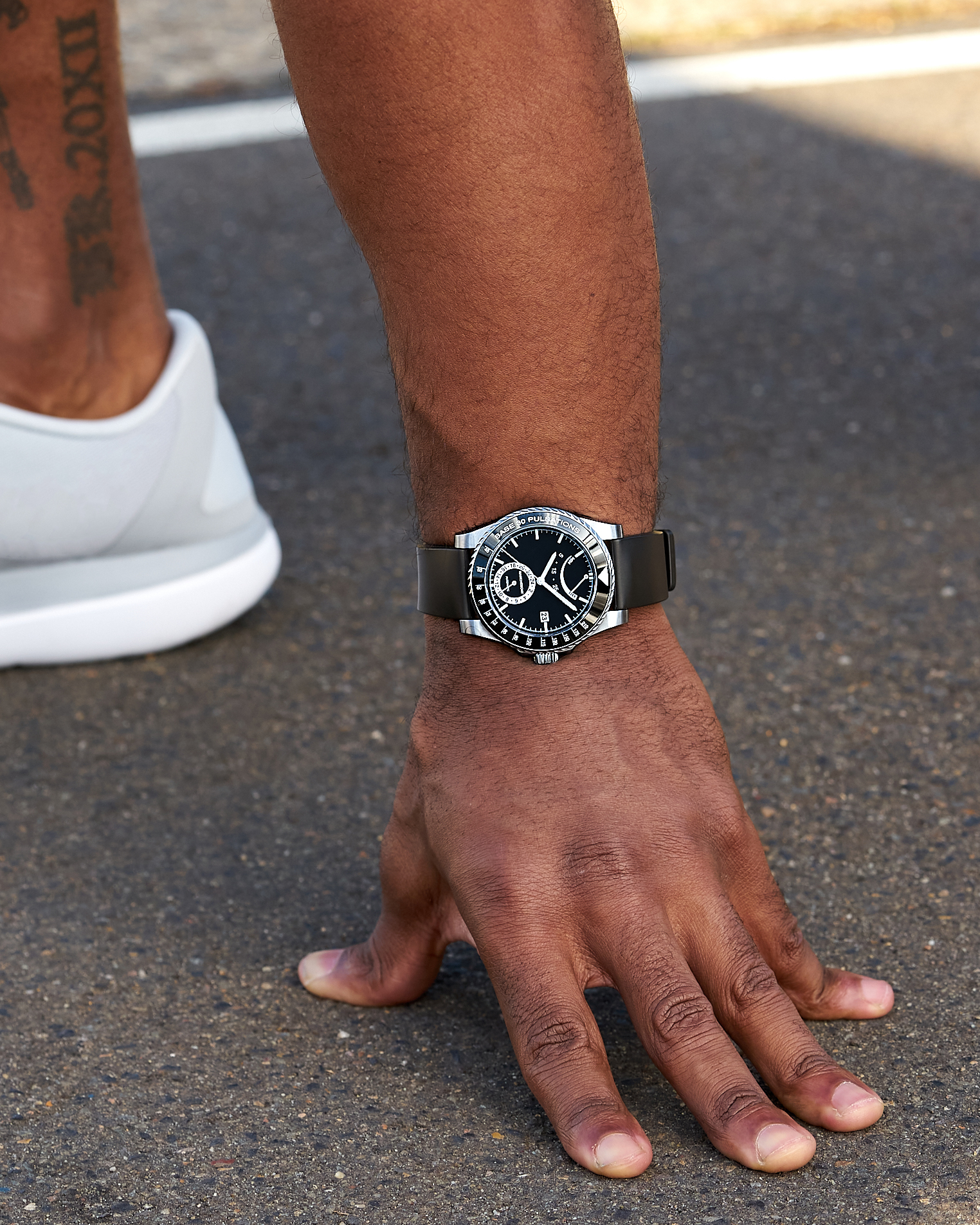
 An eye for practicality and functionality is emblematic of Mancheront’s approach to watchmaking. While it is true that digital watches offer instant heart rate monitoring and various tracking functions, the essence of the Mancheront Pacer’s analog pulsometer lies in its commitment to providing this function through a more traditional approach. This intentional choice embraces the world of mechanical functions, catering to enthusiasts who appreciate the charm, nostalgia, and tactile pleasure of traditional ways of measuring heartbeats.
An eye for practicality and functionality is emblematic of Mancheront’s approach to watchmaking. While it is true that digital watches offer instant heart rate monitoring and various tracking functions, the essence of the Mancheront Pacer’s analog pulsometer lies in its commitment to providing this function through a more traditional approach. This intentional choice embraces the world of mechanical functions, catering to enthusiasts who appreciate the charm, nostalgia, and tactile pleasure of traditional ways of measuring heartbeats.
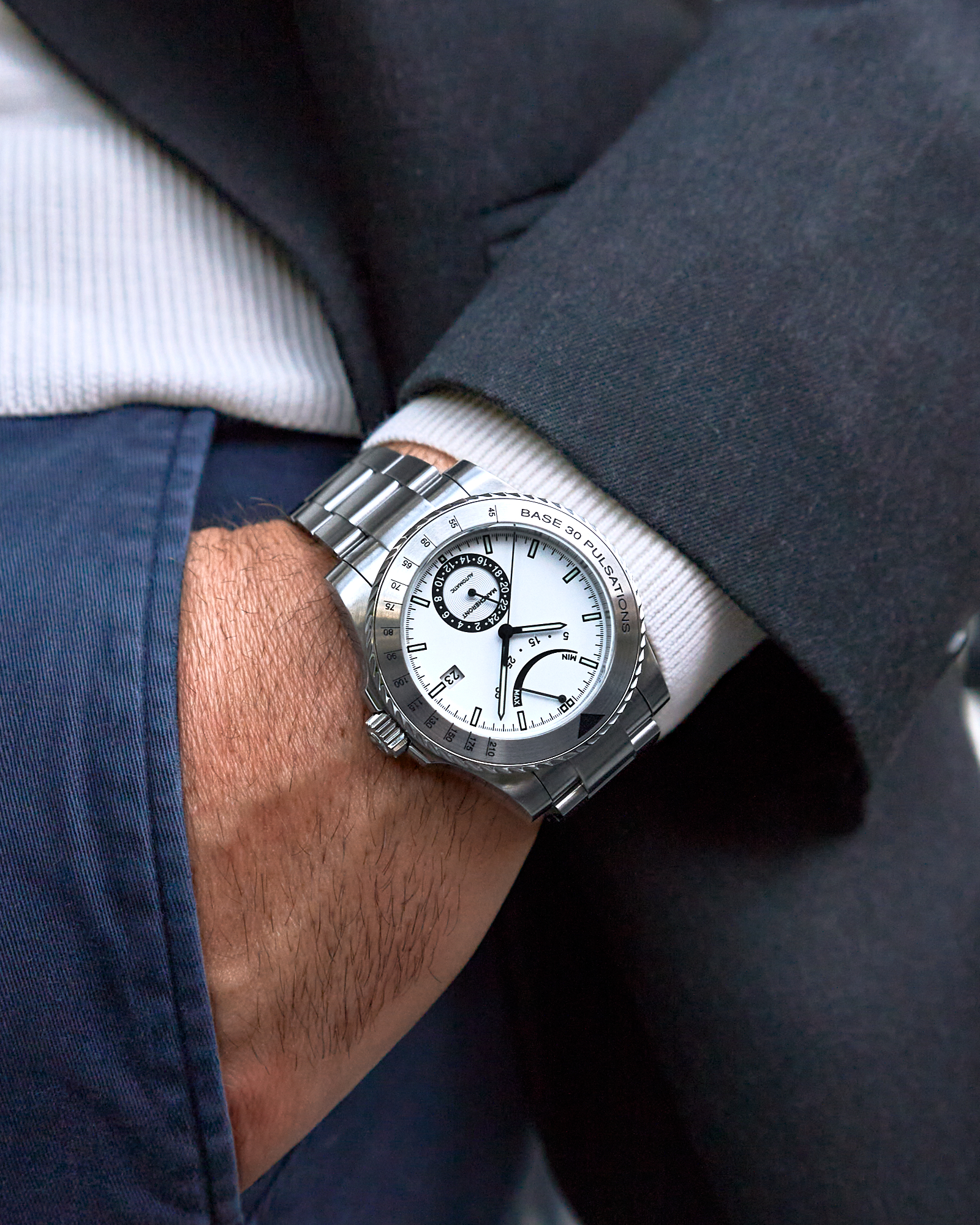 The case of the Mancheront Pacer is crafted from 316L stainless steel and measures in at a wrist-friendly 41mm in diameter and 48mm lug-to-lug. Equipped with an exceptionally solid and robust three-link stainless steel bracelet, the lug width is 20mm, making it easy to change up the look and feel of the watch.
The case of the Mancheront Pacer is crafted from 316L stainless steel and measures in at a wrist-friendly 41mm in diameter and 48mm lug-to-lug. Equipped with an exceptionally solid and robust three-link stainless steel bracelet, the lug width is 20mm, making it easy to change up the look and feel of the watch.
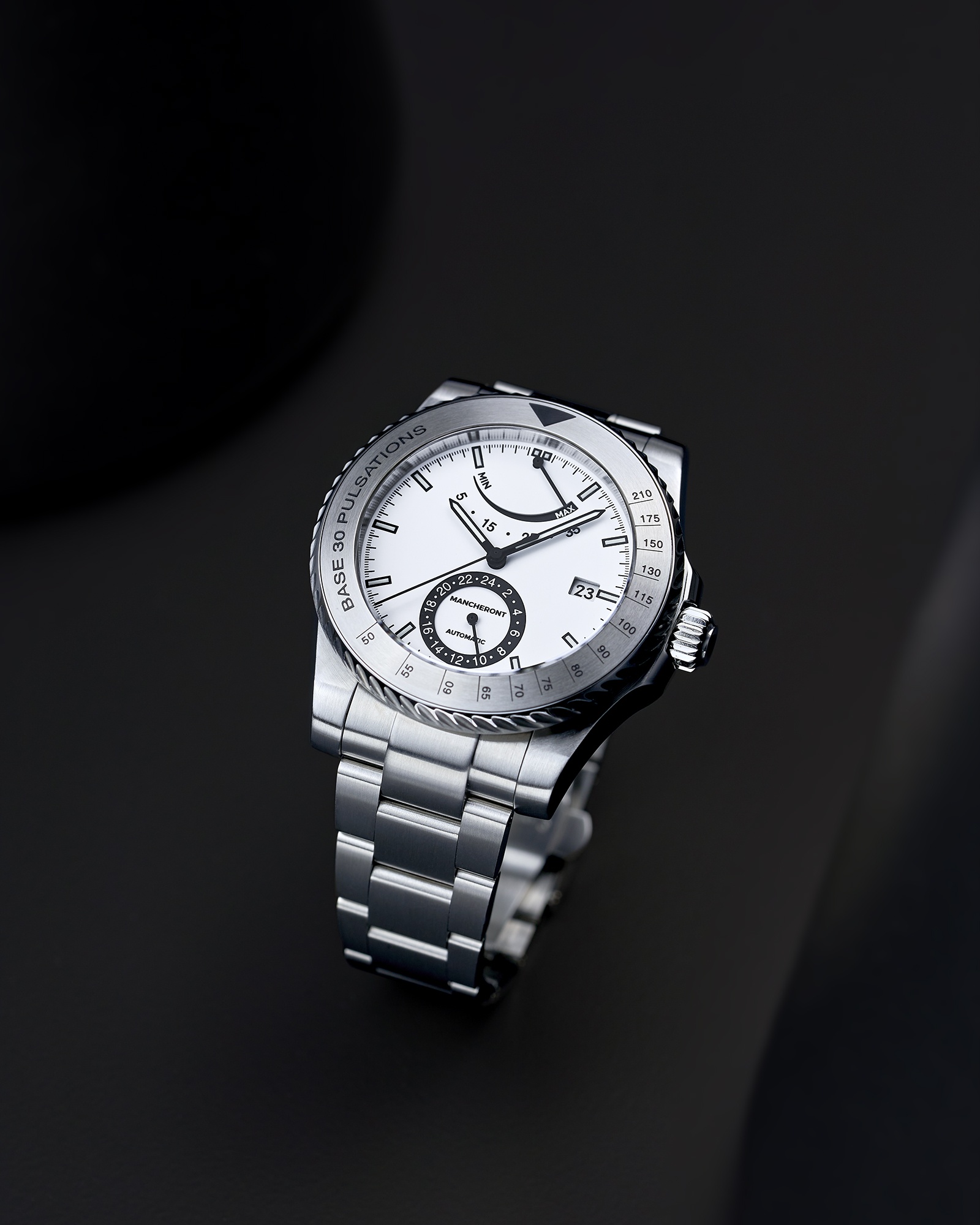 Though the 120-click, bi-directional bezel with pulsometer scale is the main talking point, Mancheront has paid just as much attention to creating a clean and legible dial with added visual interest and functionality through the use of a 24-hour dial at 6 o’clock and power reserve at 12 o’clock. Whether you opt for the black or white dial variant (the black is available with either a stainless steel or a black bezel), each uses a sandwich dial construction, with the subdials and indices on a recessed dial. The hands and indices are then coated with C3 blue Super-LumiNova for nighttime visibility.
Though the 120-click, bi-directional bezel with pulsometer scale is the main talking point, Mancheront has paid just as much attention to creating a clean and legible dial with added visual interest and functionality through the use of a 24-hour dial at 6 o’clock and power reserve at 12 o’clock. Whether you opt for the black or white dial variant (the black is available with either a stainless steel or a black bezel), each uses a sandwich dial construction, with the subdials and indices on a recessed dial. The hands and indices are then coated with C3 blue Super-LumiNova for nighttime visibility.
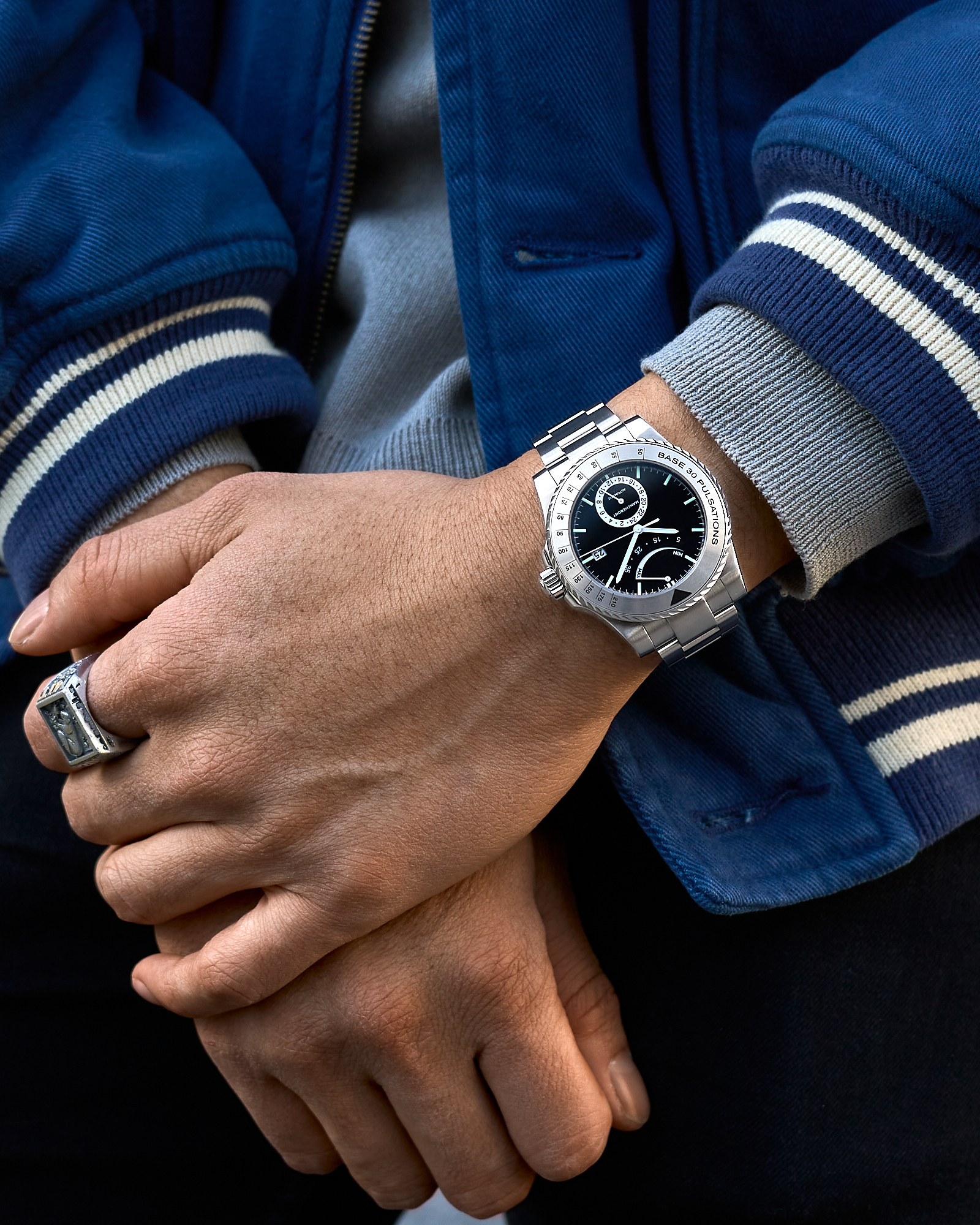 Both the power reserve and 24-hour indicator add useful information to the dial, especially for wearers that are often switching between watches and want to know if the mainspring has enough power to last until morning or need to know if it’s AM or PM before setting the date on the watch. In addition, the two elements provide visual symmetry, with the clean typeface and monochromatic colorways clearly revealing Mancheront’s discerning eye for design.
Both the power reserve and 24-hour indicator add useful information to the dial, especially for wearers that are often switching between watches and want to know if the mainspring has enough power to last until morning or need to know if it’s AM or PM before setting the date on the watch. In addition, the two elements provide visual symmetry, with the clean typeface and monochromatic colorways clearly revealing Mancheront’s discerning eye for design.
 Making these added functions possible is the Citizen Miyota 9132 automatic movement. Beating at 28.8kbph the 9132 is a time-tested movement that houses 40 hours of power reserve and includes a quickset date and hacking in addition to the power reserve and 24-hour display. Rounding out the technical specifications of the Pacer, the watch also features a sapphire crystal with multi-layer anti-reflective coating on the underside of the crystal, screw-down crown, and 100m of water resistance.
Making these added functions possible is the Citizen Miyota 9132 automatic movement. Beating at 28.8kbph the 9132 is a time-tested movement that houses 40 hours of power reserve and includes a quickset date and hacking in addition to the power reserve and 24-hour display. Rounding out the technical specifications of the Pacer, the watch also features a sapphire crystal with multi-layer anti-reflective coating on the underside of the crystal, screw-down crown, and 100m of water resistance.
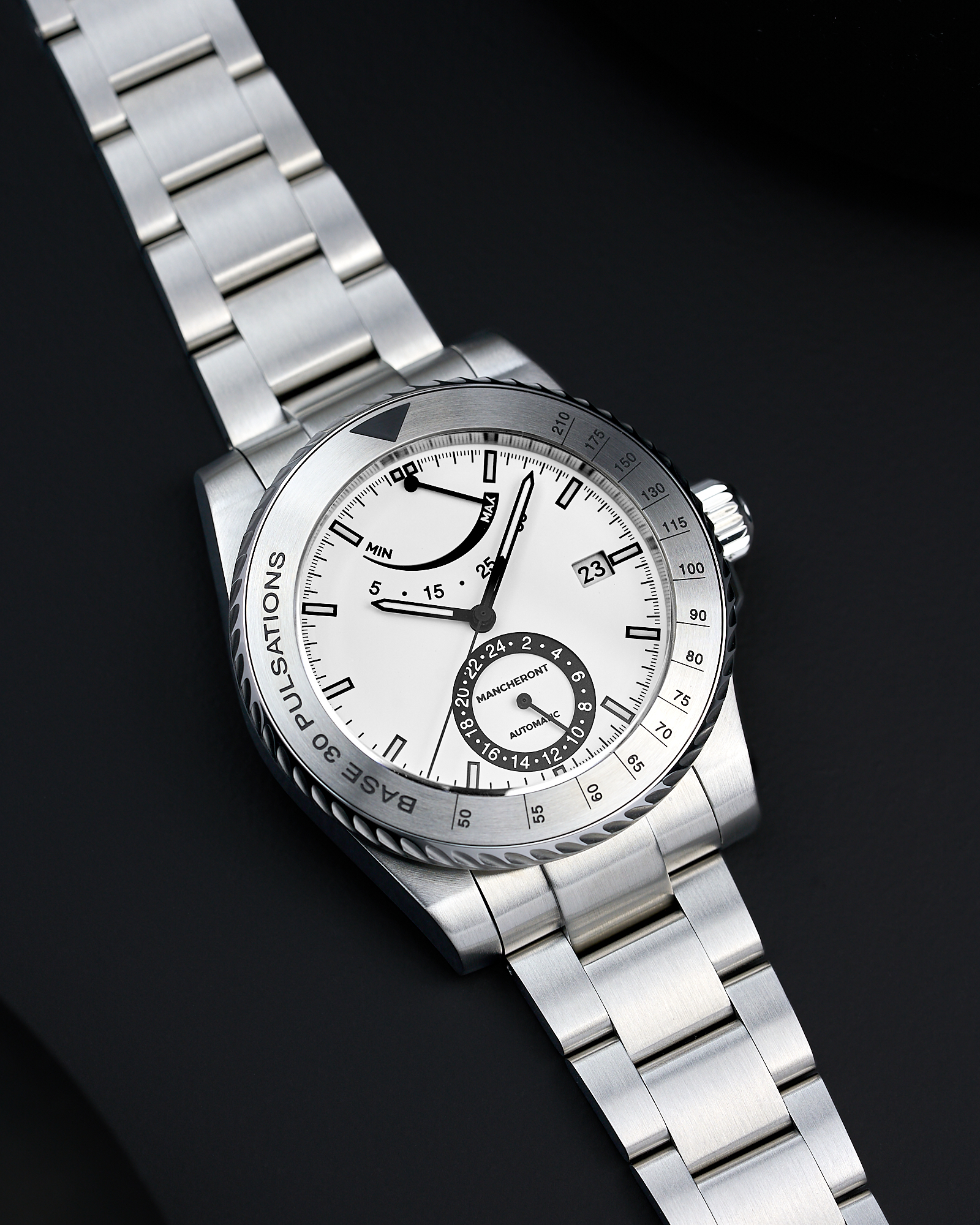 Dive watches are ubiquitous in the watch world, yet for most, the timing bezel goes largely unused. By reclaiming the rotating bezel as a pulsometer scale, Mancheront puts analog health tracking at your fingertips. Rethinking a 300-year-old concept, the Pacer offers a delightfully tactile health and fitness focus in a timepiece of outstanding build quality for discerning lovers of mechanical craftsmanship. The Mancheront Pacer is available now for $640 USD (at the time of writing) / $950 AUD. *New customers are eligible for a 10% discount on their first purchase by signing up for their newsletter and receiving a promo code. To learn more about Mancheront and the Pacer, please visit the brand’s website.
Dive watches are ubiquitous in the watch world, yet for most, the timing bezel goes largely unused. By reclaiming the rotating bezel as a pulsometer scale, Mancheront puts analog health tracking at your fingertips. Rethinking a 300-year-old concept, the Pacer offers a delightfully tactile health and fitness focus in a timepiece of outstanding build quality for discerning lovers of mechanical craftsmanship. The Mancheront Pacer is available now for $640 USD (at the time of writing) / $950 AUD. *New customers are eligible for a 10% discount on their first purchase by signing up for their newsletter and receiving a promo code. To learn more about Mancheront and the Pacer, please visit the brand’s website.

